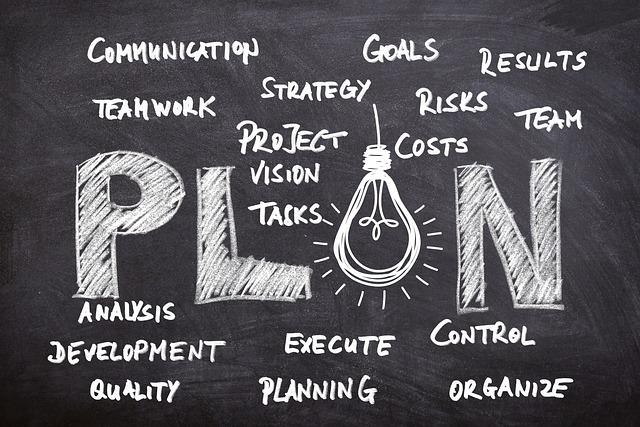Understanding Work-Life Balance
Achieving a healthy work-life balance is vital in today’s fast-paced world. People often find themselves juggling numerous responsibilities, both at work and home. Creating a work-life balance strategy lays the foundation for long-term success. It helps individuals maintain their productivity and creativity while guarding against burnout. Balancing work responsibilities with personal life allows you to recharge and actually enjoy life outside of your job.
Initially, the term “work-life balance” might seem vague, but it encompasses so much more. It’s about prioritizing your wellbeing and not sacrificing personal time for professional duties. When you prioritize work over everything else, you risk your mental and physical health. Hence, establishing a robust work-life balance strategy can lead to a happier and healthier lifestyle.
Moreover, people involved in entrepreneurship often struggle with this balancing act. As an entrepreneur, you’re constantly tethered to the demands of running your own business. Therefore, building a strategy that works for you becomes essential. Identifying your priorities, setting clear boundaries, and incorporating self-care practices are crucial components that can lead to long-lasting fulfillment. Additionally, by understanding your own limits and ensuring flexibility in your approach, you can maintain productivity without sacrificing your personal life.
Defining Your Priorities
To create an effective work-life balance strategy, the first step involves defining your priorities. You must evaluate what’s most important to you. This can range from professional aspirations to personal relationships and self-care. Taking time to identify these priorities may seem simplistic, but it holds immense weight. When you establish what truly matters, you can allocate your time accordingly.
Consider making a list that clearly distinguishes your professional obligations from your personal goals. This could be anything from finishing a critical project to spending quality time with your family. Once you clearly define these priorities, you can create a roadmap that helps you dedicate time and energy effectively. For instance, if family gatherings and personal time rank high on your list, embed these into your schedule just like business meetings. Prioritization is not a one-time activity; it requires regular evaluation. Your priorities may change, so reassess them periodically to ensure they align with your current values and aspirations.
Furthermore, when you engage in entrepreneurship, your priorities may evolve as your business grows. In the early stages, you might focus on development and client acquisition. However, as your business stabilizes, you may pivot towards mentorship, team-building, and perhaps more personal pursuits. By being adaptable to these changes, you enhance your work-life balance strategy and promote long-term success.
Setting Boundaries
Setting boundaries forms an integral part of a work-life balance strategy. Boundaries help delineate your work hours from personal time. Without these boundaries, it’s easy to slip into a routine where work overtakes your life. This situation is especially common among entrepreneurs who may feel compelled to work around the clock. However, it becomes detrimental both to your health and efficiency.
Establish clear working hours and communicate them to your colleagues or clients. For instance, if you choose to work from 9 AM to 5 PM, stick to that schedule. Turn off work notifications after hours, and resist the urge to answer emails or messages unless absolutely necessary. This practice not only helps you reclaim your personal time but also instills discipline within your work environment. Furthermore, it signals to your team or clients that you value both your work and your time outside of it.
Additionally, learning to say no is a vital skill for maintaining your boundaries. An entrepreneur often encounters numerous opportunities that can stretch resources thin. While it may seem beneficial to seize every opportunity, often it’s not. Be honest with your capabilities and don’t hesitate to decline tasks that infringe on your personal time. In the long run, this approach fosters respect and understanding between you and others while allowing you to focus on vital responsibilities.
Incorporating Self-Care
Self-care is another essential component of a work-life balance strategy. Too often, entrepreneurs sideline their wellbeing to chase professional success. However, neglecting self-care leads to fatigue and decreased productivity. By incorporating self-care practices into your routine, you not only boost your mood but also your performance at work.
Self-care can take many forms, depending on what rejuvenates you personally. For some, it might include regular exercise, meditation, or simply taking time for hobbies. For others, it could mean ensuring proper nutrition or engaging more deeply with friends and family. Make a conscious effort to schedule regular breaks during your workday and encourage a culture of well-being within your team. When you prioritize your health and happiness, you set an example for others and cultivate a more positive work environment.
Moreover, implementing self-care strategies doesn’t mean you become less productive. In fact, studies show that regular breaks and time-off can enhance creativity and problem-solving abilities. Ensure you’re devoting time to recharge, whether through vacations, short getaways, or even quiet evenings at home. Remember, your personal happiness directly impacts your work efficiency. Thus, nurturing your wellbeing contributes to long-term success in entrepreneurship.
Creating a Support System
Another crucial element for a successful work-life balance strategy involves building a solid support system. Whether it’s friends, family, or colleagues—having a support network enhances not only your personal life but your professional journey as well. Surrounding yourself with positive influences allows you to share your challenges and triumphs, which ultimately fosters mutual understanding.
In entrepreneurship, facing challenges can sometimes feel isolating. Having a group or community where you can openly discuss your experiences can offer immense relief. Consider joining local entrepreneurial networks or online platforms. These connections cultivate mentorship opportunities, collaboration, and friendship. Sharing insights and receiving support from like-minded individuals helps alleviate the burden of isolation inherent in running a business.
Furthermore, don’t shy away from seeking professional help if necessary. Therapists or coaches can provide valuable perspectives and strategies for managing stress and achieving balance. Remember, investing in support systems and mental health is synonymous with achieving long-term success. By doing so, you create an environment where you feel supported, valued, and engaged not only in your work but in your personal life as well.
Flexibility and Adaptability
In the context of a work-life balance strategy, flexibility and adaptability play a vital role. Life is unpredictable, and the ability to adjust to changes can significantly impact your overall success. Whether it’s unexpected personal responsibilities or business fluctuations, being flexible allows you to pivot without derailing your entire routine.
Create a plan that accommodates changes rather than following a rigid schedule. Factor in blocks of time for emergencies or spontaneous activities. For instance, if you have a project deadline but also want to attend a family event, evaluate which tasks you can adjust to fit both. Flexibility helps you prioritize not just your work but also your personal commitments. You don’t have to view work and life as opposing forces. Instead, treat them as intertwined components that require balance.
Moreover, adapting your strategy based on circumstances can enhance your overall productivity. If you find particular working methods are not aligning with your goals, test new approaches. Measure their effectiveness and adjust accordingly. For entrepreneurs, this experimentation isn’t just a path to work-life balance but can foster creativity and innovation within your business. By embracing change, you stimulate growth—both personally and professionally.
Recognizing the Signs of Burnout
Recognizing the signs of burnout is crucial in maintaining an effective work-life balance strategy. Burnout manifests in various forms, from chronic fatigue to diminished performance and lack of enthusiasm. When entrepreneurs focus heavily on work without taking breaks, they risk their wellbeing and effectiveness. Understanding these symptoms enables you to take early action before it becomes overwhelming.
Common signs of burnout include irritability, persistent stress, and feeling disengaged from work activities. If you find yourself dreading tasks that once excited you, it’s a clear indicator that something isn’t right. Prolonged stress contributes to mental and physical health issues, so do not ignore these signs. Acknowledge them and assess your current workload and commitments. Are you overcommitting or neglecting self-care? Answering these questions may reveal necessary adjustments to restore balance.
Furthermore, implement regular self-reflection to gauge your mental state. Journal your thoughts and feelings to gain clarity on potential stressors. By actively engaging with your emotions, you can better identify when you need to slow down, delegate tasks, or even take a personal day to recharge. Being proactive about preventing burnout doesn’t merely contribute to your wellbeing; it also enhances your capacity for long-term success.
Embracing Continuous Improvement
Lastly, embrace the concept of continuous improvement in your work-life balance strategy. Balancing both aspects of your life is an ongoing process. It requires regular assessment and adjustments as your circumstances change. Business landscapes evolve, personal lives shift, and your motivations may alter. Recognizing this ebb and flow can streamline your approach to maintaining balance.
Set aside dedicated times to review your work-life balance strategy. Are your priorities still relevant? Are the boundaries you established serving you well? Ensure your self-care practices align with your current needs. By engaging in this continuous improvement cycle, you remain aligned with your goals while nurturing your personal wellbeing. Don’t shy away from making significant changes if something doesn’t feel right.
By actively viewing work-life balance as a dynamic journey rather than a destination, you empower yourself to create a strategy that truly works for you. Accept that it’s perfectly okay to pivot strategies or reassess your life on a regular basis. Ultimately, this mindset of continuous improvement enhances your resilience and supports your journey toward entrepreneurship and long-term success.
FAQ
What is a work-life balance strategy?
A work-life balance strategy involves a set of practices that help individuals prioritize both their professional obligations and personal lives. It aims to prevent burnout and promote overall wellbeing.
Why is work-life balance important for long-term success?
Work-life balance is crucial as it helps maintain productivity, creativity, and employee satisfaction. Individuals who prioritize their wellbeing often perform better and experience a greater sense of fulfillment in both life and work.
How can I define my priorities effectively?
Start by listing your professional and personal commitments. Evaluate which aspects hold the most significance for you and allocate your time accordingly. Regularly reassess these priorities to accommodate changes in your life.
What are some signs of burnout I should look for?
Common signs of burnout include chronic fatigue, irritability, disengagement from work, and constant stress. Early recognition of these symptoms allows you to take preventative measures.
How can I create a support system to improve my work-life balance?
Build a support system by connecting with friends, family, and colleagues. Join entrepreneurial networks, seek mentorship, and consider professional guidance if needed. Engaging with a supportive community fosters mutual understanding and helps alleviate the stresses of entrepreneurship.



